We’ve completed our second full rotation of the twelve classes in the Player’s Handbook, not to mention taken a deep dive into the first 5 levels of D&D’s thirteenth class, the inventive and arcane Artificer! This wave of the Class 101 series will appraise every subclass within the Player’s Handbook and break down each subclass’s strengths, weaknesses, thematic elements, and everything else a player would want to know before playing that subclass. Because of this, you will need to own the Player’s Handbook (or purchase the subclass a la carte on the Marketplace) in order to make full use of this series.
Rogues rely upon clever tricks, careful positioning, and a healthy dose of rakish charm to survive in a world of magic and monsters. Some rogues, rather than developing their remarkable physical abilities, learn to use illusion and enchantment magic to enhance their talents. These rogues, armed with a game-changing sliver of arcane power, trick monsters, confound authorities, and laugh in the face of anyone who thinks that bars, shackles, or locks can keep them out of trouble for more than an instant.
Check out the other guides in the Class 101 series, like the broad overview of the rogue class in Rogue 101: A Beginner’s Guide to Stealth and Subterfuge, Rogue 101: Thief, and Rogue 101: Assassin. If you’re interested in playing other classes, check out the entire Class 101 series.
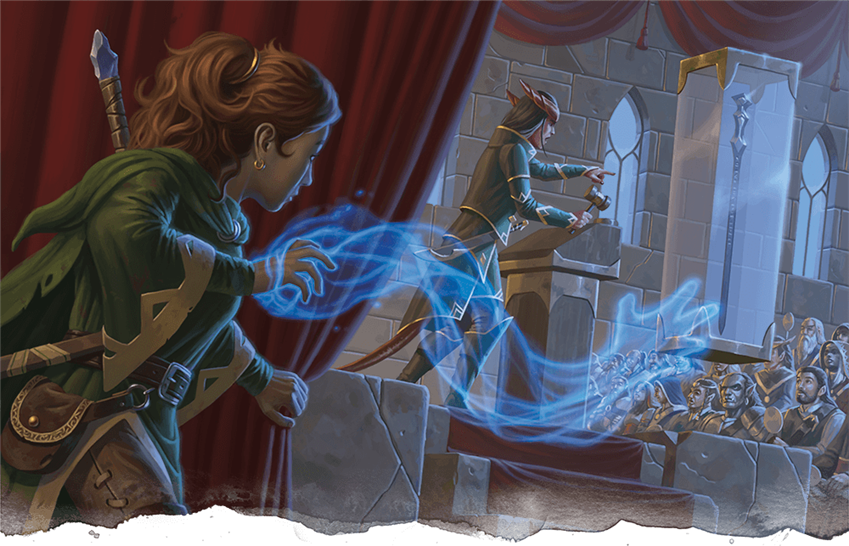
Story of the Arcane Trickster
“Can you work any faster?” hissed the bugbear. The hunched, furry creature peered into the rafters of the cellblock, his cat-like yellow eyes revealing the tiny gnome rogue perched high above the floor.
“Be quiet! And don’t rush me,” hissed the rogue in response. A lockpick hovered in the air in front of the bugbear’s cell, held by a faint, spectral outline of a debonair white glove. Up in the rafters, the gnome slowly mimed inserting the lockpick into the lock, and his mage hand matched his every tentative motion. The bugbear quietly grabbed the bars of his cell in eager frustration as the lockpick began to slowly tap the tumblers within the lock.
“Light, mate,” the bugbear whispered, a movement at the end of the cellblock having caught his eye. The light of a torch was coming down the stairwell at the far end of the hallway—a guard was coming down on their patrol.
“Just a second longer,” whispered the Arcane Trickster, sweat beading upon his tiny brow. “You know how hard it is to pick a lock when you can’t actually feel the tumblers?”
“You don’t get this done, the hangman’s gonna make sure you don’t feel nothin’ again. You’ve done this a thousand times, mate! I know you can—”
Click. A delighted smile lit up the Arcane Trickster’s face, and he swiftly recalled his thieves’ tools to his physical hands. The bugbear smirked, proud as ever of his partner in crime, and quietly opened his cell door. A moment later, he had scrambled his lithe, muscular body up into the rafters with remarkable agility, and silently motioned for his friend to escape the way he’d come. Another perfect jailbreak—and the City Watch would be flummoxed once again by his miraculous escape.
Arcane Trickster Features
Arcane Tricksters supplement their more typical roguish abilities with a smattering of magic. The rogue gains access to four subclass features, but many of them skew late. Though you gain access to the first at 3rd—and you gain new spells throughout your adventuring career—you must wait until 9th for your next, with your final two features eventually coming at 13th and 17th level. You can read all of the Arcane Trickster features in the Player’s Handbook. In summary, your subclass features allow you to:
- Cast a small number of spells from the enchantment and illusion schools (plus an even smaller number from any spell school)
- Use mage hand to manipulate objects with roguish precision
- Ambush creatures with your spells
- Distract targets with your mage hand
- Steal other spellcasters’ spells when they cast them at you
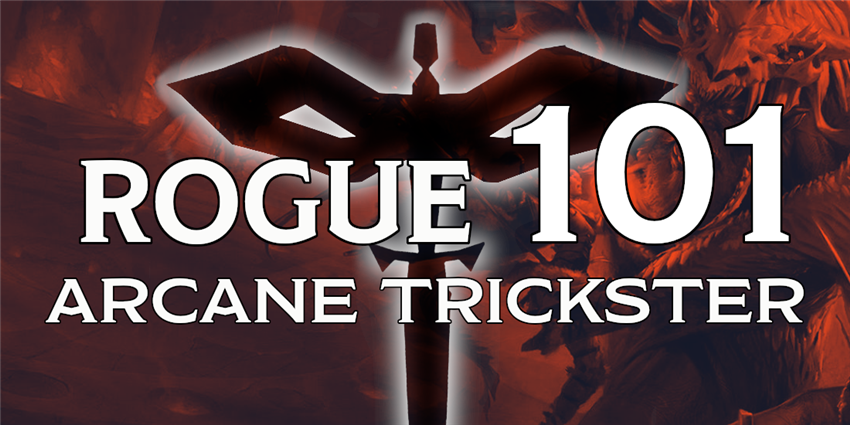
Benefits of the Arcane Trickster
Rogues who become Arcane Tricksters focus their magical studies in the schools of illusion and enchantment. These two schools dovetail perfectly with what rogues do best: misleading and evading other people. The rogue class itself is slightly lacking in social buffs to this largely stealth and damage-focused class (though a rogue could very easily become proficient in the Persuasion skill and even apply Expertise to it, for a wickedly high Charisma [Persuasion] check), but the Arcane Trickster subclass gives the rogue a small-but-potent arsenal of spells that can improve their social chops. They can learn any spell from the wizard spell list, provided they come from these two schools, including spells from sources like Xanathar’s Guide to Everything or Acquisitions Incorporated, if you’re using alternate sources. Acquisitions Incorporated has a number of spells that are more comedic than the usual D&D fare, but that fit the tone of the Arcane Trickster subclass like a glove.
This spell school restriction can feel limiting, but it’s not as bad as it seems. You’re not a wizard who’s good with knives, you’re a rogue with a few magical tricks, and you get a bunch of other benefits that wizards don’t to make up for it. If you still feel restricted, don’t forget about the “wild card” spells that you can choose from any spell school at 3rd, 8th, 10th, and 14th level. Spells that deal raw damage are appealing, but generally unnecessary—you get powerful Sneak Attack already! Generally, good out-of-school spells to pick are ones that improve your mobility (like misty step or spider climb), give you greater utility (like rope trick), make it easier to Sneak Attack foes (like blindness/deafness), or that give you new ways to make attacks that can benefit from your Sneak Attack (like magic weapon).
Lastly is a funky ability that crops up three times in this subclass’s design: the mage hand cantrip. You are a master of using this minor telekinetic ability, and can eventually do everything from picking locks with it to distracting enemies. It seems like a small benefit, but using mage hand to improve the range of your day-to-day rogue skills like picking locks, disarming traps, and stealing items can be incredibly powerful. These abilities are situational—you’ll need to have a DM that includes encounters where you have to disable devices under time pressure or suboptimal conditions—but they allow you to succeed wildly against otherwise insurmountable obstacles.
Drawbacks of the Arcane Trickster
Even though I just encouraged you to reframe your perspective on only being able to cast spells from the enchantment and illusion schools of magic, there’s no denying that it is a limitation. It’s there for a reason, and the game design behind it is solid, but there’s no denying the Arcane Trickster would be less confusing and just a bit more fun to play if you could choose any wizard spell, not just ones from two specific schools—with a tiny number of “wild card” exceptions. There are a lot of spells that would be great for a rogue to know, and they aren’t all in these two schools.
Many of the spells listed above, like spider climb, rope trick, and magic weapon come from the transmutation school of magic. A quick look at the list of transmutation spells available to wizards (and thus, Arcane Tricksters) reveals that there are a lot of incredibly roguish spells Arcane Tricksters miss out on by being locked out of this school. Feather fall, alter self, and blink, just to name a few. If you’re not in love with the spells available to you in either the illusion or enchantment school, consider asking your DM to let you swap one of those schools out with transmutation—this isn’t an upgrade, but a sidegrade, giving you a set of different options that are still roughly equivalent in power to the options you had before.
Once you’ve come to terms with your spell selection, you may be a little shocked by the similarly low number of times per day you can cast your spells. These spells are here to supplement your existing roguish abilities, not supersede them. Don’t be afraid to use them, but try not to spend your precious spell slots recklessly. Sometimes, lurking in the shadows and using Sneak Attack is your best option.
Suggested Build
Like most classes in D&D, the rogue doesn’t choose their subclass until 3rd level. If you’re playing a rogue from 1st level and think you want to become an Arcane Trickster later, you should choose a race that improves your Dexterity score (and perhaps also your Intelligence score). You’re a rogue first and a spellcaster second, but that spellcasting isn’t unimportant, either!
High elves make excellent Arcane Tricksters, thanks to their perfect ability score bonuses and their innately learned spellcasting abilities. Forest gnomes flip the ability scores on their head a bit, but still give a hearty bonus to both your important ability scores, a useful illusion cantrip, and their small size can also come in handy when trying to stay hidden. And, as usual, humans are excellent jacks-of-all-trades, particularly when you use the variant human that grants you a free feat at 1st level.
As usual, your character’s background is up to you. You can come up with all sorts of interesting stories and quirky characters by pairing unlikely backgrounds with the Arcane Trickster archetype. Lots of Arcane Tricksters were originally buskers or street performers, making the Entertainer or Charlatan background perfect for you. Or, perhaps you were a Sage who always scraped by at the bottom of their class, while sneaking out every night to go drinking with your buds, away from the stodgy wizards in their ivory tower.
It’s a safe bet to choose EQUIPMENT when given the choice between GOLD or EQUIPMENT during character creation. As long as you have a weapon with the Finesse trait (such as a rapier, short sword, or dagger), and a set of thieves’ tools, you’re set for life. If you plan on infiltrating residences, then a burglars’ pack will help you. Otherwise, choose a dungeoneer’s pack.
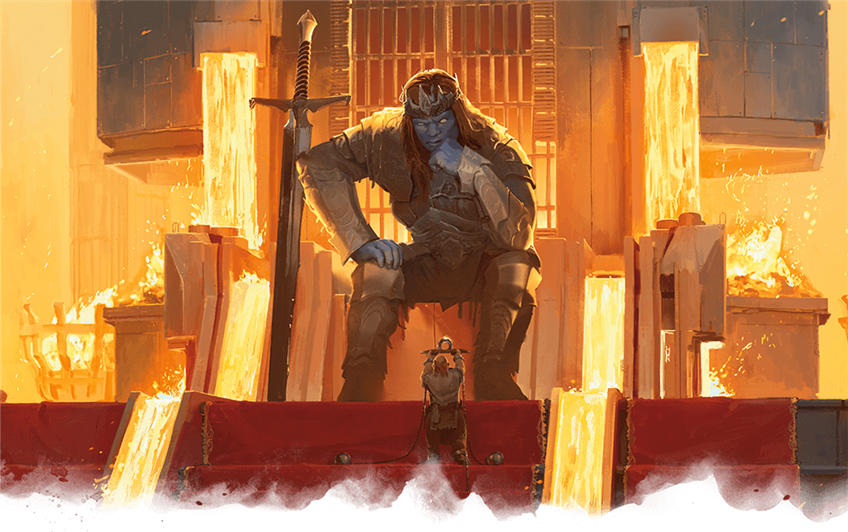
Spells
You gain the ability to cast spells when you choose this subclass at 3rd level. Your spell selection is quite limited—not only do you memorize spells instead of being able to prepare them at the start of a day, but you only have a scant two 1st-level spell slots to use. While this number increases as you level up, it encourages you to reserve your spells to set up an ambush, or as a get-out-of-jail-free card when a plan goes pear-shaped.
As a 3rd-level Arcane Trickster rogue, you know two cantrips from the wizard spell list, plus mage hand. You’re probably going to be using ranged or finesse weapons instead of offensive cantrips, since you can’t use Sneak Attack with spells. Because of this, you should choose cantrips like minor illusion or control flames, which prioritize utility over damage.
Also at 3rd-level, you know two 1st-level enchantment or illusion spells from the wizard spell list, and one 1st-level spell of any school from the wizard spell list. Choose these spells wisely; you can trade out one spell you know for another when you gain a level in this class, but otherwise these are permanent decisions. It’s wise to know at least one spell labeled UTILITY and one labeled SOCIAL, and choose your third spell based on what you think your character would want to know. Note that this list only includes some spells from the Player's Handbook, so if you want to choose more unusual spells, or have other sources like Xanathar's Guide to Everything, you'll have to do a little self-directed research. This list is just here to get you started if this is your first time playing an Arcane Trickster.
- Charm person (SOCIAL)
- Color spray (DEFENSE)
- Disguise self (UTILITY)
- Silent image (UTILITY)
- Sleep (DEFENSE)
- Tasha’s hideous laughter (DEFENSE)
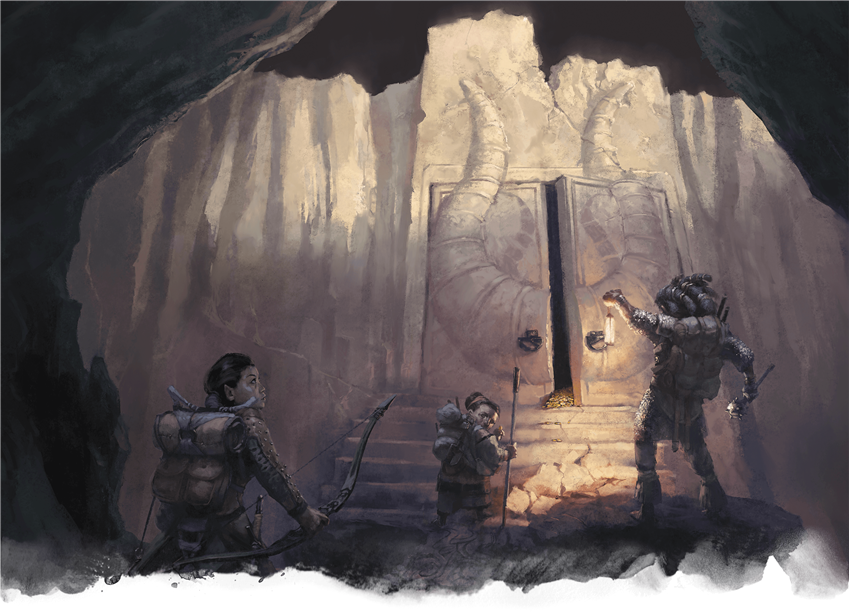
Feats
Once you’ve improved your Dexterity or Intelligence score to 18 or 20, you can increase your power with a few useful feats. The following feats are good picks for Arcane Trickster rogues, and will improve your reliability in your own desired area of expertise:
Actor. The ability to disguise yourself as someone doesn’t automatically come with the ability to impersonate them convincingly. This feat will help you get more mileage out of disguise self.
Mage Slayer. Who better to kill mages than a rogue who knows all their tricks? This feat has a ton of fascinating story potential wrapped up in a tidy mechanical package.
Mobile. If you aren’t interested in taking spells that improve your mobility, investing in this feat could make all the difference in the world.
Ritual Caster. Unlike wizards, you can’t cast spells as rituals as an Arcane Trickster. This feat will help you gain access to a handful of useful spells that you can cast without spending spell slots, such as find familiar.
Skulker. Being able to shoot without giving away your position is incredibly useful. The other benefits are nice, too.
Spell Sniper. If you can convince your Dungeon Master to house rule that this feat lets you use Sneak Attack with your ranged spell attacks (you’re sniping people with them, after all!), then this feat could be very useful for a truly spell-focused Arcane Trickster. Otherwise, it’s still somewhat useful.
If you want more advice for building a rogue, check out Rogue 101. Have you ever played an Arcane Trickster? What advice would you give to players that want to play this subclass? Next week, harness the power of your tempestuous bloodline in Sorcerer 101: Storm Sorcery!
Create A Brand-New Adventurer Acquire New Powers and Adventures Browse All Your D&D Content
 James Haeck is the lead writer for D&D Beyond, the co-author of Waterdeep: Dragon Heist, Baldur's Gate: Descent into Avernus, and the Critical Role Explorer's Guide to Wildemount, a member of the Guild Adepts, and a freelance writer for Wizards of the Coast, the D&D Adventurers League, and other RPG companies. He lives in Seattle, Washington with his fiancée Hannah and their animal companions Mei and Marzipan. You can find him wasting time on Twitter at @jamesjhaeck.
James Haeck is the lead writer for D&D Beyond, the co-author of Waterdeep: Dragon Heist, Baldur's Gate: Descent into Avernus, and the Critical Role Explorer's Guide to Wildemount, a member of the Guild Adepts, and a freelance writer for Wizards of the Coast, the D&D Adventurers League, and other RPG companies. He lives in Seattle, Washington with his fiancée Hannah and their animal companions Mei and Marzipan. You can find him wasting time on Twitter at @jamesjhaeck.








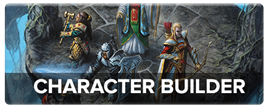
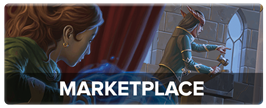

-
View User Profile
-
Send Message
Posted Oct 19, 2020Wow. First. Really?
Playing a goblin arcane trickster right now, and loving it. Thanks for the article!
-
View User Profile
-
Send Message
Posted Oct 19, 2020A fun trick for arcane tricksters is to nab sentinel (the feat) with mirror image (the spell) so that whenever an attack goes for you and instead winds up attacking the image you can make an attack as a reaction.
-
View User Profile
-
Send Message
Posted Oct 19, 2020Wow! One of my first subclasses was an arcane trickster
-
View User Profile
-
Send Message
Posted Oct 19, 2020Don't discount Catapult as a good 1st level spell. Somatic only and what ends up being an effective range of 150ft (90ft from any spot within the spell's 60ft range). Also good for yoinking small items from across spaces that are a little too big for your mage hand to cross. Just don't get hit when you pull that item towards you.
-
View User Profile
-
Send Message
Posted Oct 19, 2020Listen 'ere mate, I dun fink dat yous is takin' Bugbears seriously when yous addin' mate to end da sen'ences. P'raps if ya dropped da 'aitches a bit more we'd be more heffective.
Putting my consternation over the way mate has been used in both instances slightly ineffectually, I wanted to add that one of the best things an Arcane Trickster can do is hit 13th level and get Haste. While not being a qualifying spell (thus requiring your 3rd or 8th level spell to be replaced) you get to use your reaction every turn.
1. Using your haste attack, attack.
2. Using your action, ready an action to attack or cast booming blade with the trigger that puts it on somebody else's turn.
3. Get that double sneak in without requiring sentinel to trigger.
I am currently playing a Half Bugbear Half Svirfneblin 4'5'' (but classed as small) Arcane Trickster who got to enjoy combat a few weeks ago by throwing dynamite, then hiding and catching 8 foes with Hypnotic Pattern thanks to the magical ambush feat. Spells which only allow a single save, like Suggestion or Hypnotic Pattern, are fantastic with a trickster's application of disadvantage on the save.
Also regarding feats, skilled is great because as a trickster with access to magic that can support your skill usage, having more skills to reliable talent is always fantastic.
-
View User Profile
-
Send Message
Posted Oct 19, 2020This is a very fun trick! Jeremy Crawford's Sage Advice ruling is that it works! A very sneaky way to confound enemies with your duplicates. Especially useful if you can find a way to get Sneak Attack on your off-turn attack.
-
View User Profile
-
Send Message
Posted Oct 19, 2020Shadow Blade. Yikes.
Yeah, you can't upcast it too much...but it's an illusion spells that stacks with your Sneak Attack, and serves as a finesse weapon.
It also has a nice side-benefit of granting advantage in darkness, where a Rogue will most certainly find themselves, and will grant that fantastic condition to apply their Sneak Attack.
-
View User Profile
-
Send Message
Posted Oct 19, 2020"...when a plan goes pear-shaped." LOL! Well played, James, well played.
-
View User Profile
-
Send Message
Posted Oct 19, 2020It's a perfect Arcane Trickster spell! It's not included here because the Class 101 series only includes options found in the Player's Handbook and free resources, but it's a great one that I recommend anyone playing an Arcane Trickster with access to spells from Xanathar's Guide to Everything take!
-
View User Profile
-
Send Message
Posted Oct 19, 2020First character I made was an arcane trickster, first thing I did was pick pocket a noble, first roll i got was a nat 20, first thing i ever stolen was a nobles lute, coin(300gp), deeds to his mansion, and the clothes off his back, first disadvantage roll also so double nat 20, did it in prod daylight, yes it easily a I'm going to steal your stuff 30 feet from you.
-
View User Profile
-
Send Message
Posted Oct 19, 2020I'm glad you called out find familiar as a good pick for Ritual Caster; I'd just like to suggest it as a great pick for your first "any-school" spell as well!
Of special note, your familiar is an ally for Sneak Attack, and, even better, it can Help you in combat so you attack with advantage (triggering Sneak Attack and improving your chances of hitting). This is particularly good if you choose an owl, which has 60ft fly speed and Flyby, so it doesn't trigger Opportunity Attacks.
-
View User Profile
-
Send Message
Posted Oct 20, 2020I know you're only using PHB stuff, but BOOMING BLADE. Past level 5, it is just free damage, and with Cunning Action, it can be easy to trigger the extra damage.
-
View User Profile
-
Send Message
Posted Oct 20, 2020Sam Riegal is that you?
-
View User Profile
-
Send Message
Posted Oct 20, 2020Yay! I’ve been waiting for this article for ages! I have a potential arcane trickster in my party and can’t wait to try playing one
-
View User Profile
-
Send Message
Posted Oct 20, 2020That’s not how you spell it but yes is it you?
-
View User Profile
-
Send Message
Posted Oct 20, 2020This subclass is fun but I do not like the mostly enchantment/illusion restraints
-
View User Profile
-
Send Message
Posted Oct 20, 2020I would add to the feats list [feat]Magic Initiate[/feat]. It both gives you 2 extra cantrips, which are very useful, and an extra 1st lv spell from anywhere per day. This can greatly increase your spellcasting power. Also, if you play a variant human, you are an arcane trickster from 1st lv!
-
View User Profile
-
Send Message
Posted Oct 20, 2020I played a forest gnome arcane trickster with a super maxed-out sleight of hand skill. His random "starting trinket" was a small box filled with different-sized buttons, so I decided he was obsessed with buttons and whenever possible he would pickpocket buttons off of people - even in the middle of combat. "I may have missed with my sneak attack, drow assassin, but I took the buttons off of your vest!
-
View User Profile
-
Send Message
Posted Oct 20, 2020Booming Blade is definitely great if you like using Cunning Action to stay out of melee range or you can get the target to willingly move, but it's worth pointing out that two-weapon fighting still does more damage from 5th to 10th level if the target doesn't move. The bonus action attack adds about the same amount of damage as Booming Blade from 5th to 10th level but you're getting two chances to score a Sneak Attack. I wouldn't consider it a must-have until 11th level.
This is a good trick but for anyone considering it, don't forget the object takes the damage too if it slams into something. If the object is fragile you'll need a clear 90 foot straight line path which makes this tricky in tight spaces.
-
View User Profile
-
Send Message
Posted Oct 20, 2020My sister is playing a gnome arcane trickster right now and I’m telling you all this right now. If you are an arcane trickster, you need to get fog cloud. You can hide in your fog cloud, jump out and get your sneak attack because you were hidden, then jump back in and be hidden from all attacks. Absolute must.